Get the best deals on flights, rental cars, and hotels for this destination.
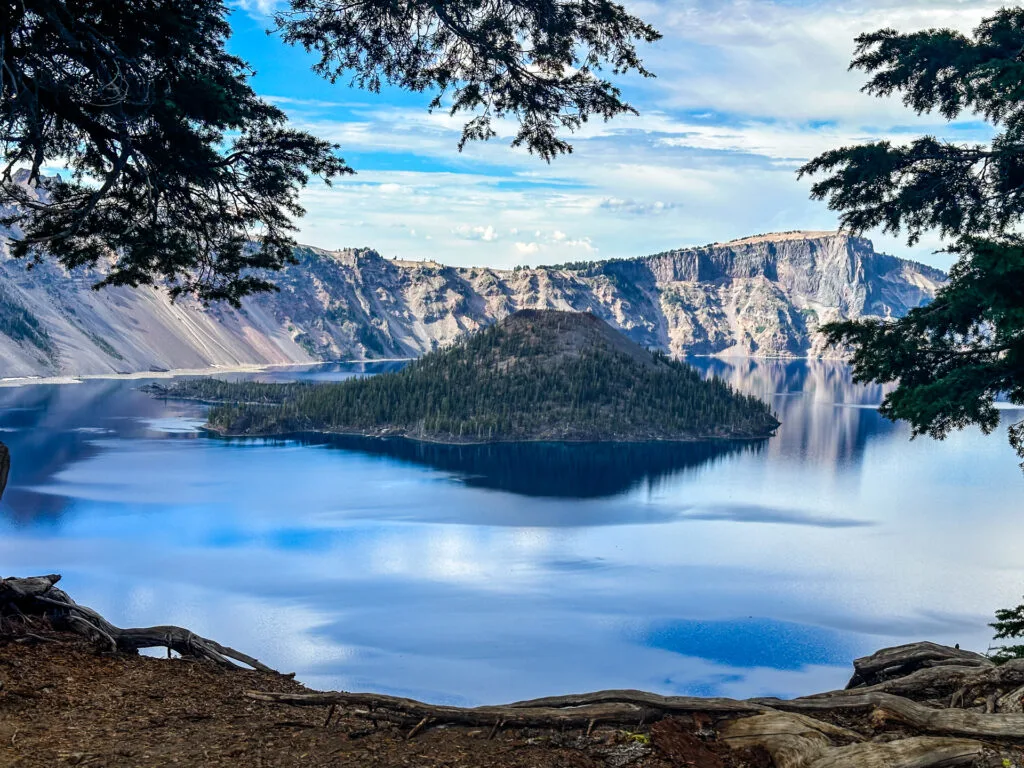
Looking for a unique way to experience a national park that is the perfect balance of adventure and exploration but doesn’t involve sitting in the car and driving from lookout point to lookout point all day or spending four days backpacking in the wilderness? We’ve got just the thing: ride your bike around the Rim Road at Crater Lake National Park!
“That’s crazy!” you say? “It’s too hilly and there are cars!” you say? Well, no, it’s totally not crazy! And yes, it’s hilly, but if you plan strategically and get to Crater Lake in early September, you absolutely can ride (almost) the entire rim road with no cars at all! It’s the totally FREE Ride the Rim event and it. was. baller.
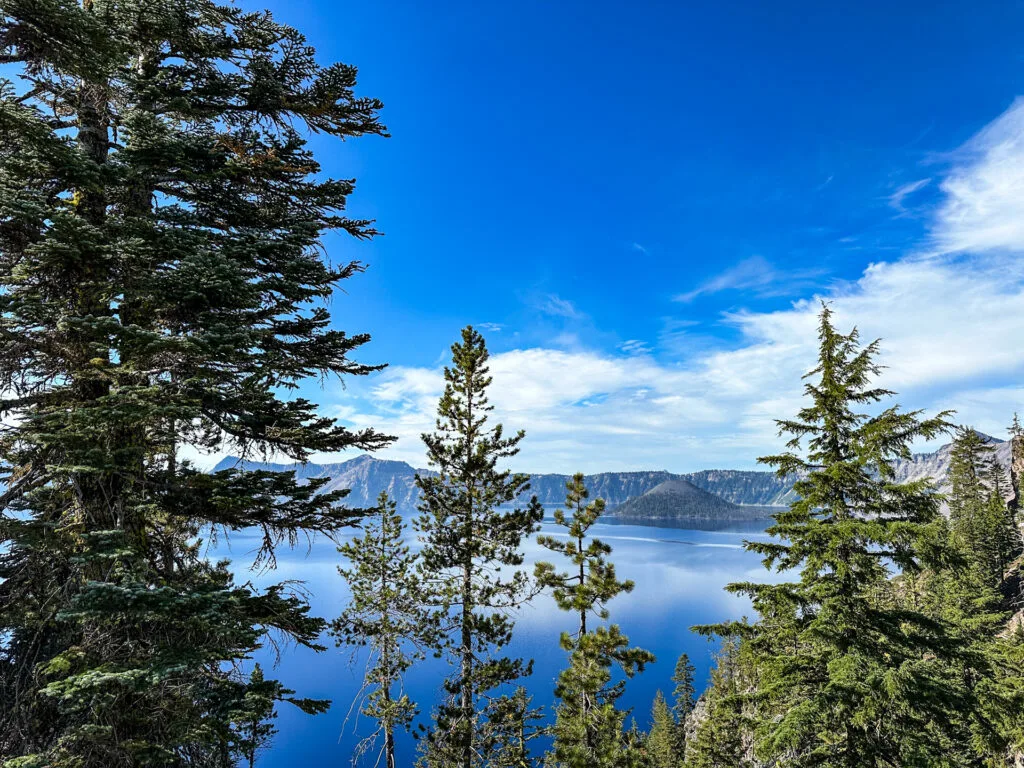
What is Ride the Rim?
Ride the Rim is a delightful event that’s organized by Friends of Crater Lake and Discover Klamath, in conjunction with the National Park, of course, that invites cyclists (but also runners and walkers) to ride the entire East Rim Drive of the Park when it’s completely shut down to vehicular traffic.
Yup, cyclists take over the roads, don’t have to worry about any cars at all (unless they choose to also ride a 9-mile stretch of West Rim Drive, but more on that below), and can ride at their leisure all day long while enjoying the amazing views of Crater Lake, zipping downhill along old growth forests, and experiencing the joy and camaraderie that only traveling via two wheels with hordes of other cyclists can bring.
It’s not a race, so there are no set start times (though it officially “opens” at 8:00 am), and the roads remain closed and rest stations open until 4:00 pm. Yup, there are rest stations staffed by Friends of Crater Lake volunteers who offer light snacks (though you should definitely pack plenty of your own), have bike pumps and first aid kits on hand, and there are portable toilets at each one, which is nice, because you don’t pass many along the road.
When is Ride the Rim?
In 2024, the event took place over 2 Saturdays in September: the 7th and the 14th. Presumably, the 2025 Rid the Rim event will take place on similar weekends at the beginning of September. This year, while exact numbers weren’t announced at the time I wrote this, at least 4,700 people from all over the U.S. registered for one or both weekends, and another 800 were expected to register day-of each time (though day-of registration isn’t preferred). That’s a lot of riders!
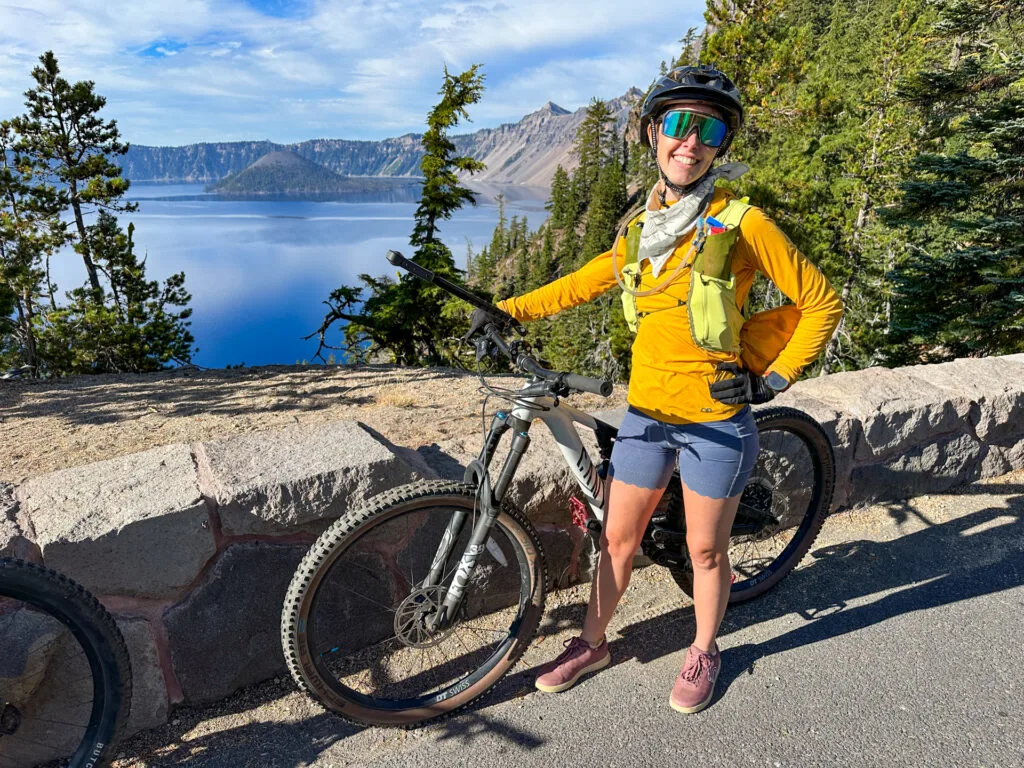
What Kind of Bikes are Allowed at Ride the Rim?
If there’s one thing we love about this event, it’s that all bikes are welcome! Road bikes, gravel bikes, mountain bikes (that’s what we rode), tandem bikes, bikes with kid carriers and trailers, recumbent bikes, adaptive bike, yup, even e-bikes! No restrictions on what types of cycles are allowed means you can ride whatever you’ve got and ride even if you need a little pedal assist to help get you up those hills.
It’s part of what makes Ride the Rim such a welcoming and accessible event for all, whatever your age, ability level, or if you own one rusty hardtail or an expensive road racer. Which is great, because everyone should be able to participate in an event like this.
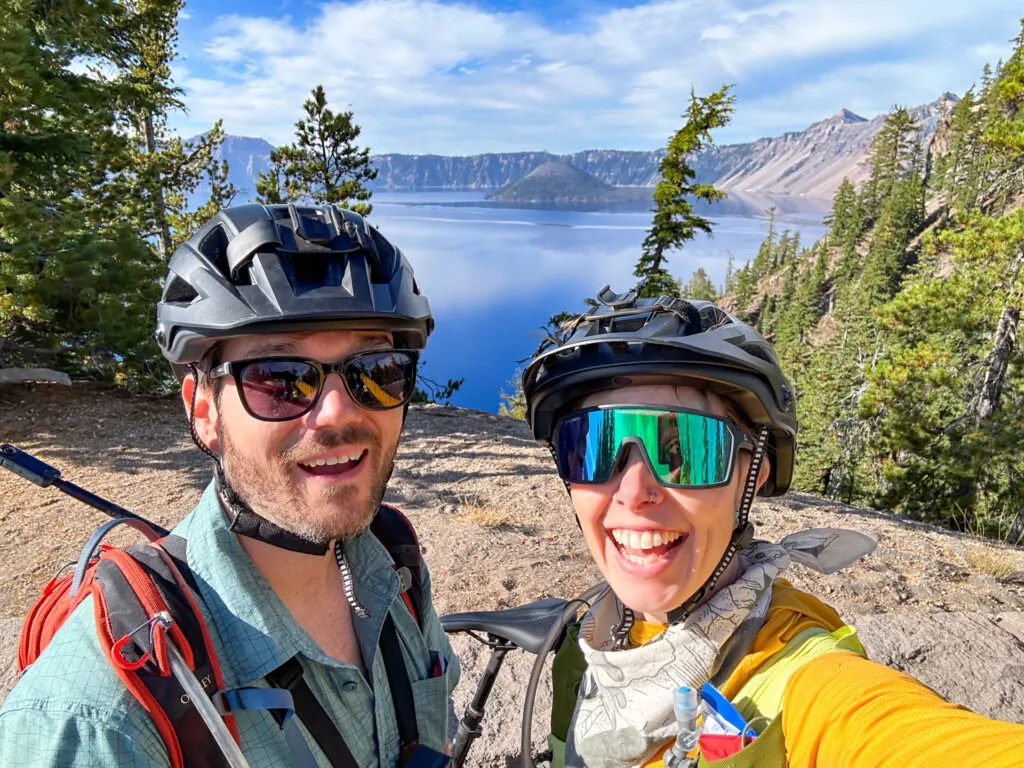
How do I Ride the Rim?
How is easy: you register in advance (for free!), then load up your bike and head to the park. You do need either a day-use pass for the park or an America the Beautiful annual park pass to get into the park, but that’s all. The event doesn’t have an official hard start Tim like a race, so you don’t even have to worry about getting there super early for your heat (though early birds get better parking spots).
Ad I mentioned, you have two options for routes and either option can be ridden clockwise or counterclockwise, though most prefer clockwise:
- Start from the North Junction, ride 23 miles on East Rime Drive to Park Headquarters, then lock up your bike, take a shuttle back to your car, and come back for your bike with your personal vehicle.
- Start from North Junction or Park Headquarters and ride the whole 39 miles, 9 of which involves sharing the road with vehicular traffic on a long and winding, mostly uphill stretch of West Rim Drive.
We went with the first option because we didn’t like the idea of sharing the road with distracted national park visitors when there was no where to pull off and rest if we got tired. That said, if we did it again, we would probably park at the bottom, ride the shared road up early in the morning when there weren’t as many cars and they were all driven by other extra cautious cyclists, and then finish back where we started.
It would have been a lot more uphill, but at the beginning of the ride when we were fresh, and we wouldn’t have had to deal with the shuttle system, which took nearly 2 hours to get up up to our car and then back down to our bike.
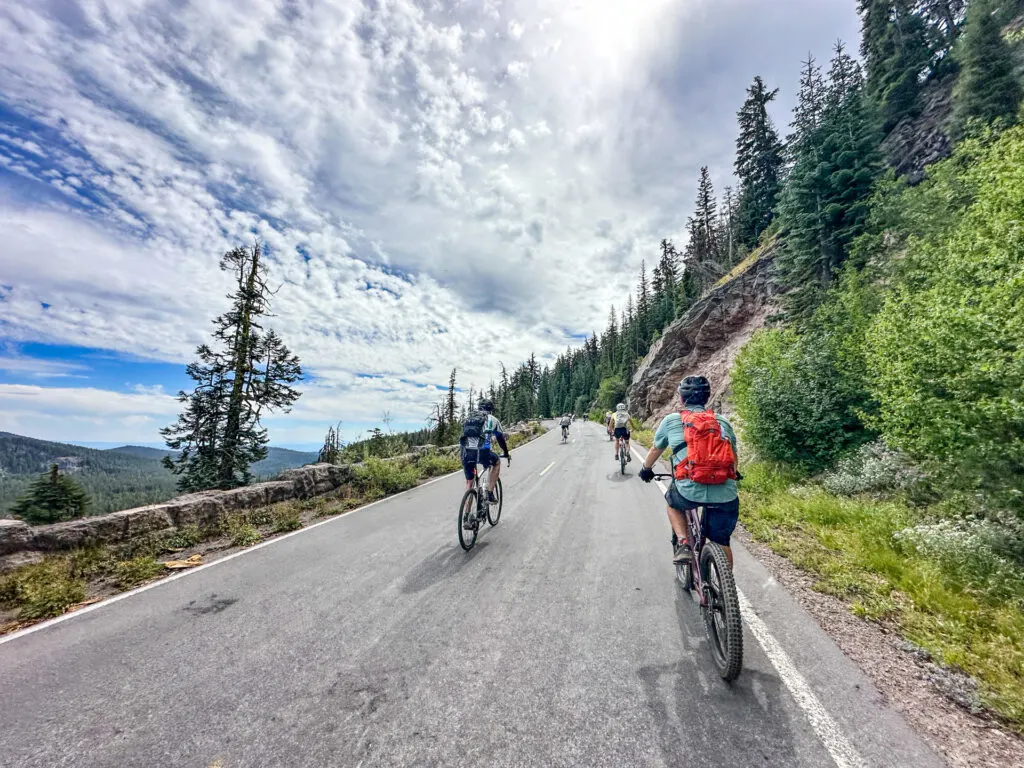
What is Ride the Rim Like?
As for what the experience is like, it’s fantastic! Depending on what part of the route you’re on, you get alternating views of impossibly blue Crater Lake and Wizard Island, the Phantom Ship rock formation, untouched old growth forests, and mountains and valleys in the distance. Trust us: there’s never a dull moment or a boring stretch of road. And we had spectacular weather with blue skies and perfect 65º temps.
In past years, there’s been more construction, but it was minimal this year and the road was in great shape in all but a small patch.
There are numerous pull-outs where riders would take a break, congregate, enjoy the views, and swap cameras for photos, meaning in addition to the organized rest stops, there were plenty of places to stop and take a break. And we took advantage of pretty much every. single. one.
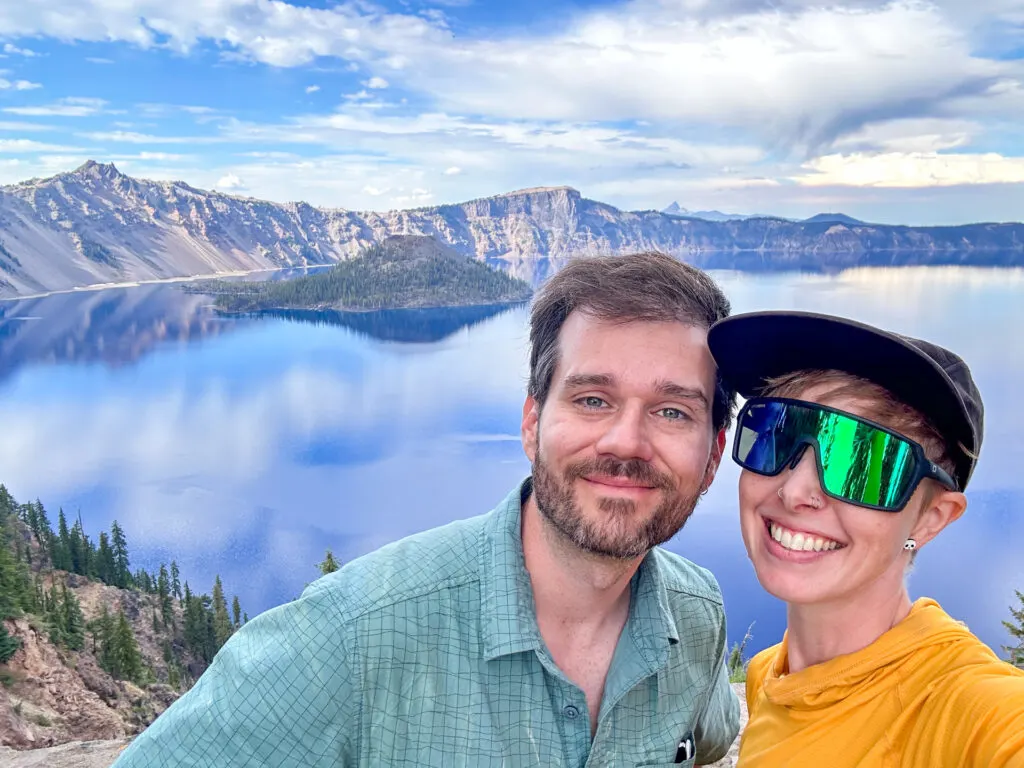
The camaraderie was just as lovely as the scenery. At every stop, there were strangers helping each other with shifting, brakes, derailleurs, seat height, you name it. Riders laughed together, swapped stories, chatted and encouraged one another, and exchanged exuberant smiles as they passed each other. And I wasn’t the only one whooping and cheering as I sped downhill.
And there was PLENTY of speeding downhill to be had. In fact, most of the route is just extended climbs followed by just as extended downhills, so you work hard, then you play hard (though I picked up enough speed that I regularly rode the brakes just to ensure I kept everything under control). That said, the uphills weren’t nearly as bad as I feared. We rode our mountain bikes because we don’t have decent road bikes at the moment, and I was concerned all that extra rubber would make it feel impossible.
And yes, there were plenty of people passing me on fancy road bikes on the uphill, but boy did I have no trouble whipping past some of them on the downhill, what with a full suspension opened up and absorbing any little bumps! But most of the grade (incline) was supremely tolerable. After all, the road was built over a century ago when cars couldn’t handle the grades they can today, so the hills felt totally doable if not occasionally like long, slow slogs that never ended.
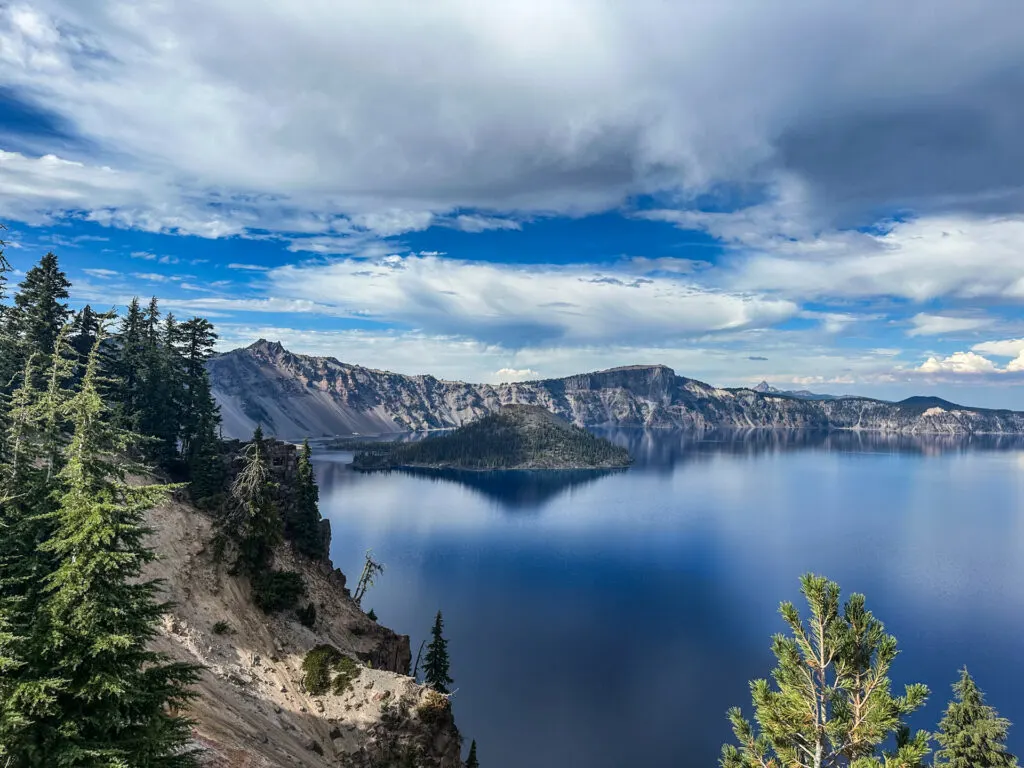
And no, we didn’t train for prolonged uphills or lengthy rides, though we ride, hike, and lift often, so we’re in pretty good physical shape. I will say that if you live close to sea level, you might want to arrive a couple of days before the ride so you can get used to the elevation. The route is between 6,700 and 7,700 feet (approximately), so you might get a bit huffy and puffy if you’re not used to it. We live at around 4,400 feet and regularly hike and bike closer to 6,000 or 7,000, so between that and our relative fitness level, even after having spent a weekend on the Oregon Coast, I almost never felt out of breath while climbing (I do often when mountain biking, for reference).
The only thing I would change about the ride? I wish it were longer! True, we didn’t do the additional 9-mile road ride with cars, but to be honest, our legs were feeling pretty pumped by the end. Even so, I wanted to ride more! Longer! Cycling will do that to you. It was truly such an enjoyable ride and experience that I wouldn’t hesitate to do it again next year. Because if there’s a better way to explore a national park than by bike, I don’t know what it is.
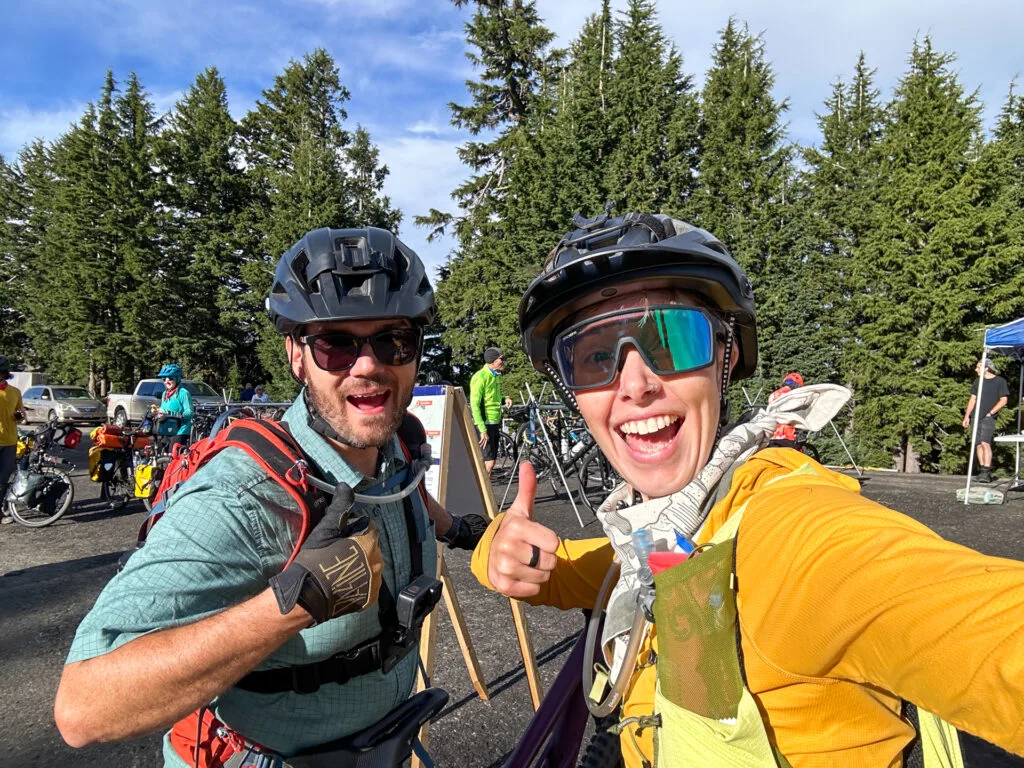
What to Bring for Ride the Rim
Ready to start planning your own ride? Here’s what we found helpful to bring along:
- Padded Chamois for men and women: Wouldn’t dream of riding that distance without one. I wore my Shredly Biker Cham and Josh his BN3TH chamois.
- Extra Layers: Because it’s a long ride and you’re at higher altitudes, bring at least a windbreaker. I packed my Patagonia Houdini Stash jacket and Josh his OR Helium ultralight rain jacket.
- A small backpack: If you have frame bags, those are probably sufficient to hold your necessities, but we don’t, so I carried a Deuter Track 5 Running Vest and Josh an Osprey Raptor 14.
- Water: Hydration reservoir or bottles, dealer’s choice. We each had a 2L bladder and then brought 2 empty bottles for electrolytes. There was plenty of water for refills at the rest stops.
- Bike Tools: Sure, there are tons of people around who might have some, but I prefer to carry my own so I don’t have to ask for help to fix a flat or tighten a loose seat post.
- Helmet: You know we brought our Sena M1 Evo helmets with the intercoms so we could chat even if we got too far from each other to shout.
- Snacks and Electrolytes: We brought homemade energy bites, all-fruit gummies, snack bars, and several packets of Tailwind Nutrition Endurance Fuel to keep us energized and our muscles from cramping.
Bottom Line
Basically, Ride the Rim rocks. So pencil it in on your calendar for September, get on your bike, and ride! Wander on.
